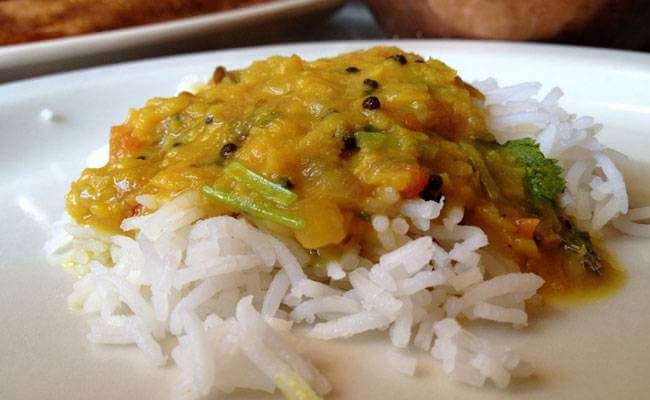Our Yoga expert, Navodita, tells us about Ardha Baddha Padma Paschimottanasana and three postures of Marichya Asana, named after Sage Marichi. These asanas release tensions and generate flexibility in the spine. She tells us the benefits of one of the Ujjayi Pranayama, the Kapalbhati Pranayama. Here’s the weekly column, exclusively for Different Truths.
Sitting poses have a lot of benefits, especially for the spine. These poses help to release tension and generate flexibility in the spine. A well-rounded practice helps improve the posture of the spine and improves alignment. So here are some more such asanas:
Ardha Baddha Padma Paschimottanasana
Sit straight in Danda Asana. Keep your left leg straight and bend your right leg in half Padma-asana so that your entire heel is on your left thigh. Now raise your arms and exhale and touch your toes. Touch your head to the knee and breath normally for twenty seconds. Repeat this asana with the right leg straight and the left leg bent.
This posture opens the hips and knees and stretches the spine. Here the abdominal organs are toned as circulation to the pelvis is increased. The position of the heel also benefits the digestive system.
Marichya Asana I
This is yet another pose in the seated position. It is dedicated to a sage named Sage Marichi. In this asana, you have to sit in Danda Asana. Bend your right leg so that the right knee faces the ceiling. Now wrap your right hand around the right knee and exhale and bend forward. Repeat this with the left knee bent for twenty seconds.
This pose stretches the hips, hamstrings, and shoulders. It also activates the abdominal organs. It stimulates digestion and metabolism.
Marichya Asana II
Here you are supposed to sit in Danda Asana. Bend the left leg in Padma Asana so that the left heel touches the right thigh. Then bend the right leg with the knee raised towards the ceiling as in Marichya Asana I. Wrap your arms around the right knee. Bend your head to touch your left knee. Do this asana for about twenty seconds and repeat with the right leg bent in Padma Asana and left knee raised towards the ceiling.
This asana is again a hip opener. The foot presses up against the internal organs, which brings a contraction to the belly. It also opens up shoulders as you bend the arms around the other leg. This pose also helps build patience and greater balance.
Marichya Asana III
Start by sitting in Danda Asana. Keep your left leg straight and bend your right leg so that the right knee faces the ceiling. Take your left arm, exhale and place your elbow on the right knee. Twist and push your elbow into the knee. Stay in this pose for twenty seconds. Repeat this asana with the right leg straight bending the left leg so that left knee faces the ceiling.
This asana tones the belly organs such as the liver and intestines and helps relieve lower back stiffness. It aids digestion and cures stomach ailments.
It’s time now for some pranayama and breathing to end the yoga workout.
Ujjayi Pranayama
This technique of breathing is very simple. Sit in Vir Asana with palms facing the ceiling on your knees. Take a deep breath in through the roof of your palate taking out a slightly nasal sound. Exhale, in the same way, taking out a nasal sound from the roof of your palate. Inhale and exhale around thirty times.
In Ujjayi many forms of Pranayama are done. One of them is Kapalbhati Pranayama.
Kapalbhati Pranayama
The name of this Pranayama literally means ‘skull’ and ‘shining’ also called the ‘Skull Shining Pranayama’. Here each breath has to be taken in Ujjayi. First, sit in Padma Asana, close your eyes and keep the spine straight. Now take a deep breath through both your nostrils until your lungs are filled with air. Now exhale through both the nostrils forcefully, so that your stomach goes deep inside. As you exhale you feel some pressure in your stomach. While the process of exhaling is on, there is a hissing sound. Imagine that your disorders are being exhaled from your nose.
Repeat this cycle of inhalation and exhalation for five minutes to start with and slowly depending upon your capacity, increase the time to fifteen minutes.
This completes an entire Yoga regimen for the day but here’s something to ponder over:
- Understand yourself and you will understand the world better: What is your Nature? Your nature is to move towards something life-supporting. The nature of life is to evolve. So whatever is not conducive to evolution is poison. Of all the objects of your senses, whichever is pulling you back is like poison; whichever is creating the boredom in you and giving a momentary sense of something is poison. Just drop them.
- It is easier said than done to actually forgive: When a wrong happens towards you or you are aware that you have erred, the hardest thing is to forgive yourself. You are unable to excuse yourself. The thing disturbs you and bothers you. Learn to forgive yourself. Some impressions were responsible for your actions. You have to free yourself from the past and how can you do it if you can’t forgive.
- Living in the present: The toughest thing is to live in the present moment but that alone can give you bliss. Nobody has control over the past nor the future. The only thing that is in our hands is the present day. The best you can do with your present will determine how your future will be.
©Navodita Pande
Pix from Net.











 By
By

 By
By
 By
By